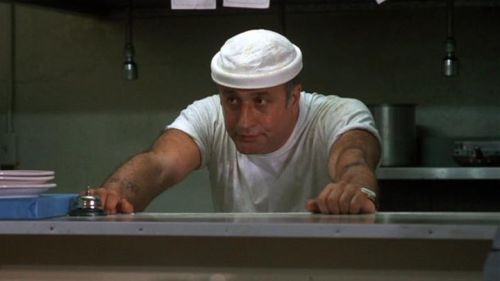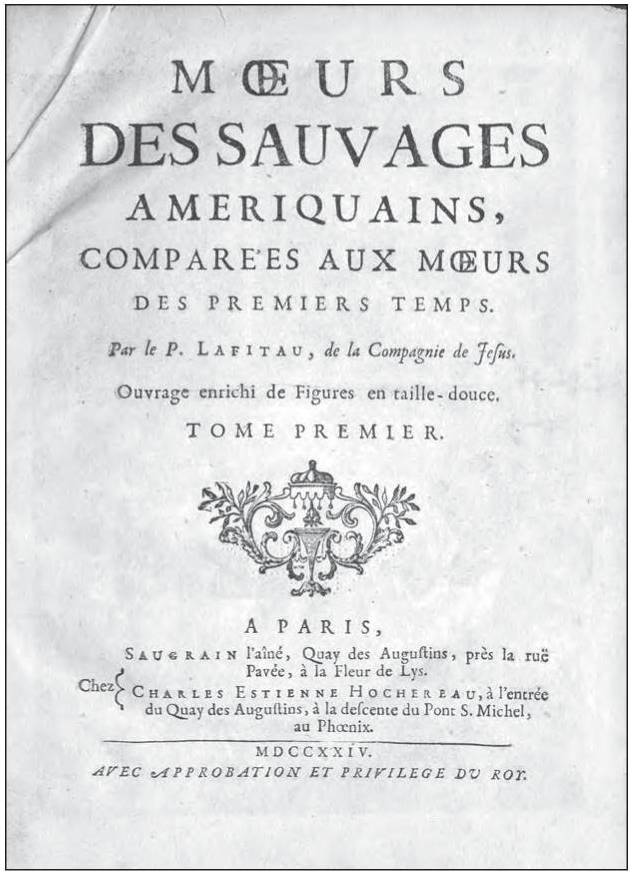
[Addendum added 5/25/21]
I like to watch all kinds of cooking shows: How-to, competitions, and especially those that give a behind-the-scenes look into the kitchens of various top-tier restaurants. A common trend I have noticed is how many of the younger chef crowd—male and female—have arms covered in tat “sleeves.” I see that and get an impression of a greasy spoon establishment with an ex-Navy cook wearing dirty white pants and stained apron with a white T-shirt wet with sweat and arms with tattoos he got in various ports, no doubt, after nights of serious drinking and debauchery…something akin to the “Mel” character in the old sit-com Alice (I can’t find any pics of Mel with any tats, just hairy arms which I find equally unsavory—and that includes you, Jacque Pépin).
If you have never noticed this phenomenon, spend a few minutes perusing some examples.
Intellectually, I know the ink is under the skin, but something about the visual of someone in the food industry with “sleeves,” or worse—tattoos on their hands—prepping and cooking food has a bad aesthetic that is very unappealing and unappetizing. I am far from alone in that sentiment.
Is there a reason for this trend in the restaurant/food services industry? Apparently, yes. Apparently, it’s all about “passion.” If you care to delve deeper into tats and chefs/butchers et al, you might like to sample this smorgasbord of related posts.
My thing about tattoos and food service personnel has been a (mostly) quiet personal peeve for quite some time. I bring all this up publicly now because of a commentary piece I came across yesterday about the tattoo culture/inculturation of America that raises some good points and common sense observations, as well as an old SNL piece that is spot-on, in my opinion.
I particularly don’t understand the appeal to women. I think the “tramp stamp” is aptly named. Tats aren’t as cool as you think and will probably, eventually, become a source of huge regret. I cannot fathom why an otherwise attractive woman would desecrate herself with tattoos on her face, her neck, or that wrap around a shoulder, down the back, down into the chest ruining what was always one of the very visually appealing portions of the unadulterated female form. Simply put, they are not becoming—anywhere. Why do you want to look like an ancient mariner, a trucker, or a gang-banger/inmate (did I miss any stereotypes)? “Ladies,” this is a major turn-off to me. I’m not into the projection and perception of the bad-girl image or the twisted notion that if you wear a slinky sleeveless black dress then tats become high-fashion. And on older and allegedly “mature” women, they are just plain dreadful.
I find it odd that people who think they have something to say through inked skin make some strange choices of what they get marked with and why. Example: What is the fascination with using oriental glyphs to express concepts? If the person viewing the alleged artwork/message can’t translate it, what’s the point? Or, why the need to have the names of your husband/wife/children, your dog, motorcycle, truck, or military units, etc., permanently memorialized in skin? Are you going to forget? Are you worried you will be stricken with a rare memory disorder like Guy Pearce’s character in the very good movie, Momento in which he has vital personal information tattooed on select places of his body, in reverse, so he can read, retrieve, and re-remember the information when he is standing in front of a mirror?
Obviously, I am not a fan of tattoos—on anyone. Never understood the desire. Never had the urge to get one. And that includes at any time or in any port or place I was back in my military days, regardless of my state of inebriation and the group-think mentality of my shipmates. To be blunt, I don’t buy into the narrative that tats are about “passion.” I think what is driving this social idiocy is, in some cases, deeply misguided tribalism, and in others, a desire to be thought of as cool and hip to this social/fashion trend. It’s sad, but it’s your psyche and your body; do with them what you will. Just accept the inevitable consequences of your choices…and time. And don’t forget about the potential problems should you ever need an MRI.
When I see someone who has gone to such lengths to alter their body in this manner (and I’m not even touching on piercings), I get a perception of crudeness, unsavoriness, as well as a sense of being dirty and unsanitary. And yes, of someone who has made really bad choices. Yes, it’s stereotypical. Yes, I think they are tacky, and badly designed and executed ones just look ugly and promote the trashy stereotypes (which, although not politically correct to say—and I don’t care—usually have some degree of truth). Since I have no choice but to see them, that’s the way I see it.
Again, I recommend the commentary mentioned above. There is no point in me regurgitating what was written. But knowing how lazy readers tend to be about links in posts or anything that smacks of requiring any intellectual work (recall what I just said about stereotypes), I will quote the quintessential paragraph:
If tattoos were once an act of rebellion against cultural norms, now they are a well-established norm. If you want a tattoo, hey, it’s a free country. But it seems many people still get them laboring under the delusion that they’re a hallmark of individualism. The desire to use visual signals on your skin to proclaim yourself unique to people you don’t even know can’t be terribly healthy. It is, in a subtle and penetrating way, kind of selfish. Or maybe my misanthropy is showing, but the omnipresence of people begging to be noticed for such superficial reasons is surely annoying.
I think I have made a case against them being simply “annoying.” They look ridiculous and enforce stereotypes (aren’t we supposed to get in-your-face enraged about such things in this “new” “progressive” era?) to the point that sometimes I can’t help shaking my head and laughing quietly to myself.
And want to send back my food and go puke…
Addendum 10/26/19
“Le pique,” or tattooing, is the negative limit of clothing. It implies the vanity of ornament without the utility or modesty of clothing.
I recently came across this section in an article on biohacking:
…The oldest known tattooed mummy is 5,300-year-old Ötzi the Iceman. Ötzi was found in a glacier in the Alps, inked up 61 times. And if you’re thinking, “So what? Tattoos can’t give you superhuman abilities” — hear me out.
Tattoos were used much in the spirit of modern biohacking — to make people “better.” In the 1700s, Jesuit missionary Joseph-François Lafitau wrote about the way indigenous people in Canada used tattoos to treat toothaches. They tattooed nerves along the jawline connected to certain teeth, which stopped them from firing signals to the brain that made teeth hurt. Even Ötzi’s tattoos might have been therapeutic: British archaeologist Don Brothwell, who examined the mummy, noted that many of the tattoos were placed in areas of strain-induced degeneration and might have been used to alleviate pain.
I was going to be a bit snarky and say that there are no comic book/sci-fi heroes who get superpowers from being tattooed. Good thing I decided to fact-check that assumption. Turns out there have been. But in the real world, tattooing as a precursor of acupuncture (c. 100 BC) did not and will not make anyone a superhuman. Nevertheless, intrigued, and noting the post author did not include any references to back up the “superhuman” declarative statement (the link in the quote also doesn’t mention Lafitau), I set out to validate the facts in the discussion by finding the source of the information.
I allowed myself to become sidetracked in that quest as I perused a fair number of pieces advancing various allegations of known or potential benefits of tattoos and some genuinely practical applications. I include a selected smattering below:
The first item I found was an article that opens with:
Getting tattoos can be painful, but did you know they were partly invented to treat pain? In the mid-18th century, Native American women tattooed themselves to alleviate toothaches and arthritis, similar to acupuncture. [12/2/20 this is now a dead link and I can’t find the article archived anywhere]
Hardly a source, but rather a restatement of something the author found elsewhere—unmentioned—just like in the biohacking article, with the exception of explicitly using the word acupuncture. Onward…
Here you can see some good photos and a lot of the same information seen in numerous other places, but not much in the way of sourcing is provided.
There are articles positing that getting tats is a good thing, as noted just above, but the logic is off. Stating alleged unproven beneficial effects is not exactly a scientific cause-and-effect relationship that proves anything. This one is really reaching to create an aroma of relevance.
However, there are some medically useful purposes being developed.
At everwideningcircles.com there is an excellent article and video that includes images of the Ötzi mummy and also discusses the questionable choice of getting tats in foreign languages no one can read, which I mentioned in my post.
This article touted the alleged health benefits of tats, but I note the really small sample size and have no choice but to question the conclusions with extreme jaundiced prejudice.
Should you get a medical tat as a substitute for a medical ID bracelet?
From a medical journal abstract with links to related topics.
And this one ends with some negative points to ponder, one of which I mentioned in my post.
And one more from Smithsonian magazine.
A better, more medically focused reference, was found was this journal article, Tattooing as a Method of Acupoint Stimulation and Potential Therapeutic Intervention. In the list of references, I noticed that the earliest cited is from 1994, which includes a discussion of the Ötzi mummy noted in the biohacking article and elsewhere, but has no mention of Lafitau.
addendum 5/25/21
The oldest known tattoo tools were found at an ancient Tennessee site
After a solid hour or more of following links and looking for academic studies (aka, guided purposeful diversion…now you know why I don’t write more and have a growing backlog of partially completed posting projects), I eventually decided it was time to get back to tracking down the initial source of the narrative from the biohacking article.
I came across an academic article by Gordon Sayre, then an associate professor at the University of Oregon titled The French View of Tattooing in Native North American Cultures. The blockquote that introduces this addendum section is the first two lines from that article (published in the Proceedings of the Meeting of the French Colonial Historical Society Vol 19, 1994 pp. 23-34, Michigan State Univ Press).
 Included in the article was a discussion of the very same Joseph-François Lafitau mentioned in the biohacking piece, and his major work, first published in 1724 in Paris, entitled Moeurs des Sauvages Amériquains, Comparées aux Moeurs des Premiers Temps which translates to Customs of the American Indians Compared with the Customs of Primitive Times. The manuscript was translated from the original French and published in English by The Champlain Society in two volumes in 1974 and 1977. Its 1,100 pages documented his field studies comparing the customs of northern natives in Canada with cultures past and then-present around the world. His superlative comparative field study methodology made him famous in the academies of Europe.
Included in the article was a discussion of the very same Joseph-François Lafitau mentioned in the biohacking piece, and his major work, first published in 1724 in Paris, entitled Moeurs des Sauvages Amériquains, Comparées aux Moeurs des Premiers Temps which translates to Customs of the American Indians Compared with the Customs of Primitive Times. The manuscript was translated from the original French and published in English by The Champlain Society in two volumes in 1974 and 1977. Its 1,100 pages documented his field studies comparing the customs of northern natives in Canada with cultures past and then-present around the world. His superlative comparative field study methodology made him famous in the academies of Europe.

The references to tattooing for medical purposes look like they will be in Vol. II, Chap VII (see pic). I have seen very short mention of Lafitau’s observations of medical tattooing in other non-academic articles (usually one or two lines) that appear to have been picked up and repeated—often word-for-word, or nearly so—in all kinds of other articles and posts, evidenced by some of the examples linked to above, usually without mentioning Lafitau.
As far as I can tell, in the time I allotted myself for research, I believe I have found the original source. I have not provided any direct quotes because in order to do so would require reading it, which would require purchasing a copy of Vol. II from the Champlain Society or other sources (avg $39-$59), which I am not about to do as no one is paying me to exhaustively research an addendum to a whimsical post available to anyone to read for free. If this lack of complete citation is abhorrent to you, feel free to bequeath a directed endowment so that I may purchase a copy and properly finish this addendum.
I believe I have dispelled the assertion that tats can make any of us “superhuman.” Nevertheless, while it was a fascinating sidetrack to my day, nothing in this addendum changes my opinion of tats in general—at least for the present—and never will in the culinary world.